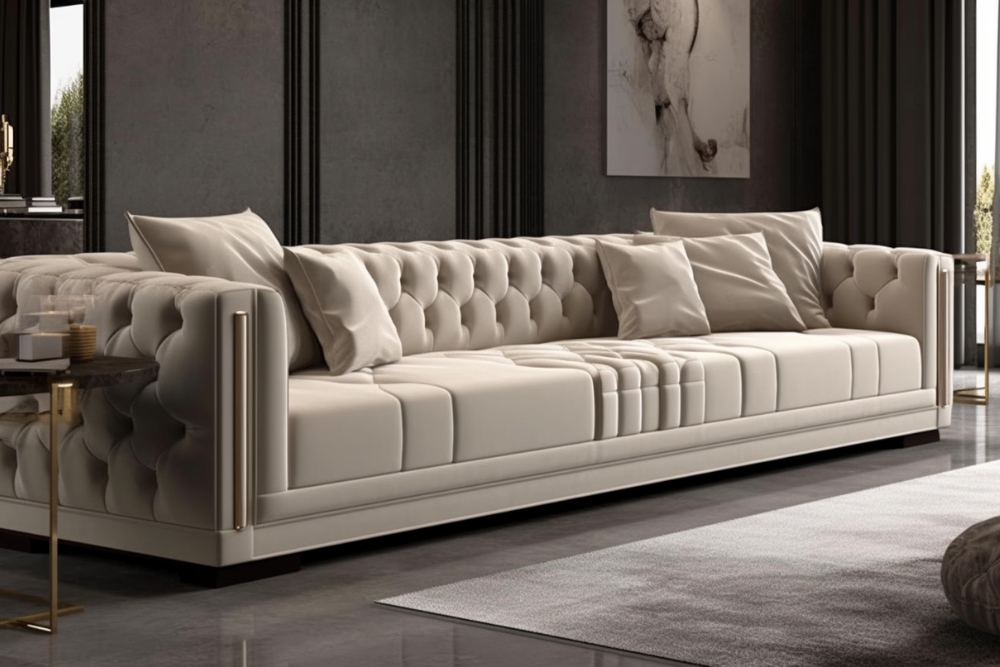Acoustic Textiles: The Silent Revolution in Home Decor
Picture this: You're lounging in your living room, surrounded by plush fabrics that not only look stunning but also actively shape the soundscape of your space. Welcome to the world of acoustic textiles, a cutting-edge trend that's redefining how we think about home decor. These innovative materials are marrying form and function in ways that promise to transform our living environments, creating harmonious spaces that cater to both our visual and auditory senses.

The history of acoustic textiles dates back to the mid-20th century, with early experiments in sound-absorbing fabrics primarily focused on industrial and commercial applications. However, it wasn’t until recent years that advances in material science and a growing awareness of the impact of sound on wellbeing sparked a revolution in residential acoustic design.
Weaving Science into Style
The magic of acoustic textiles lies in their structure. These fabrics typically feature complex weaves or layered constructions that create tiny air pockets or channels. When sound waves hit the fabric, they’re trapped within these structures, converting sound energy into heat through friction. The result? A significant reduction in echo and reverberation, leading to clearer, more pleasant acoustic environments.
Modern acoustic textiles come in a variety of forms, from dense, tightly woven fabrics to more open, three-dimensional structures. Some incorporate specialized fibers or treatments to enhance their sound-absorbing properties, while others rely on innovative weaving techniques to create sound-dampening effects.
Beyond Noise Reduction: The Multifaceted Benefits
While the primary function of acoustic textiles is to manage sound, their benefits extend far beyond noise reduction. These innovative materials are reshaping our home environments in several key ways:
-
Enhanced Comfort: By reducing echo and reverberation, acoustic textiles create more comfortable living spaces, especially in open-plan homes or rooms with hard surfaces.
-
Improved Privacy: In multi-occupancy homes or apartments, acoustic textiles can help maintain privacy by reducing sound transmission between rooms.
-
Stress Reduction: A quieter environment can significantly reduce stress levels, contributing to overall wellbeing and mental health.
-
Energy Efficiency: Some acoustic textiles also offer thermal insulation properties, potentially helping to reduce energy costs.
-
Aesthetic Versatility: Available in a wide range of colors, patterns, and textures, acoustic textiles can enhance any interior design scheme.
From Walls to Windows: Applications in Home Decor
The versatility of acoustic textiles opens up a world of creative possibilities in home decor. Here are some innovative ways to incorporate these sound-smart materials into your living spaces:
-
Wall Coverings: Acoustic wallpapers and fabric wall panels offer a stylish alternative to traditional sound-absorbing treatments.
-
Curtains and Drapes: Window treatments made from acoustic fabrics can significantly reduce outside noise while adding a layer of visual interest.
-
Upholstery: Furniture upholstered in acoustic textiles not only looks great but also contributes to a room’s overall acoustic balance.
-
Room Dividers: In open-plan spaces, acoustic fabric panels can create visual and auditory separation without the need for permanent walls.
-
Ceiling Treatments: Suspended acoustic panels or fabric-wrapped ceiling tiles can help manage sound in rooms with high ceilings.
The Future Sounds Good: Emerging Trends in Acoustic Textiles
As the field of acoustic textiles continues to evolve, several exciting trends are emerging:
-
Smart Acoustic Fabrics: Researchers are developing textiles that can actively adapt their acoustic properties in response to changing sound environments.
-
Sustainable Acoustics: There’s a growing focus on eco-friendly acoustic textiles made from recycled or biodegradable materials.
-
Customizable Soundscapes: Advanced acoustic textiles may soon allow us to shape our home’s soundscape with unprecedented precision, creating truly personalized acoustic environments.
-
Multifunctional Fabrics: Future acoustic textiles may incorporate additional features like air purification or mood-enhancing lighting.
Harmonizing Your Home: Practical Tips for Incorporating Acoustic Textiles
Ready to explore the world of acoustic textiles in your own home? Here are some practical tips to get you started:
-
Identify Problem Areas: Start by pinpointing spaces in your home that could benefit from improved acoustics, such as echoey living rooms or noisy home offices.
-
Consider Your Style: Choose acoustic textiles that complement your existing decor. Remember, these materials come in a wide range of designs and textures.
-
Layer Thoughtfully: Combine acoustic textiles with other sound-absorbing elements like rugs and soft furnishings for maximum effect.
-
Don’t Overdo It: While acoustic textiles can greatly improve a space, it’s possible to over-dampen a room. Aim for a balance between sound absorption and natural acoustics.
-
Seek Professional Advice: For complex acoustic challenges, consider consulting with an interior designer or acoustic specialist.
As we continue to seek harmony in our living spaces, acoustic textiles offer a compelling blend of style and functionality. By embracing these innovative materials, we’re not just decorating our homes – we’re sculpting our sonic environments, creating spaces that truly resonate with our desire for beauty, comfort, and tranquility. The silent revolution of acoustic textiles is here, and it’s music to our ears.





